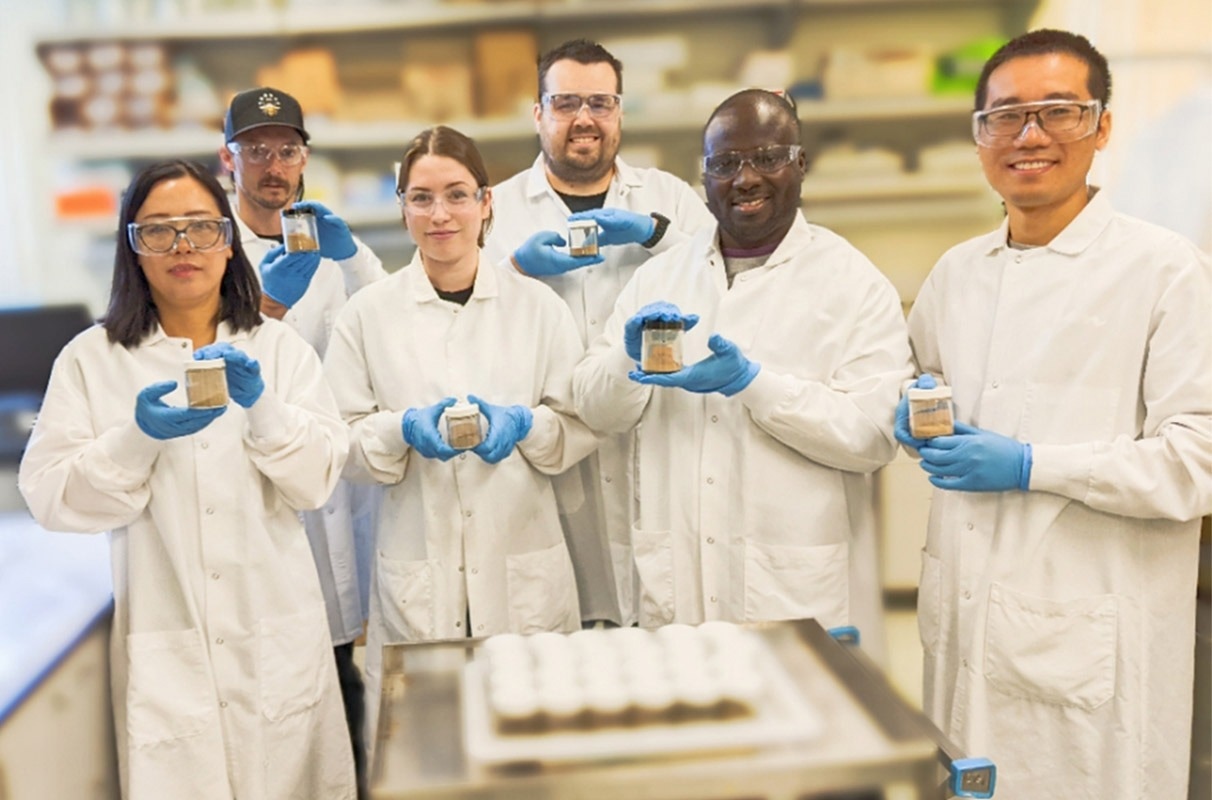A new technique to extract lignin could help transform wheat straw into gold. The new method produced homogenous, colorless, and odorless lignin, an improvement that might make this carbon-neutral material a more appealing candidate for high-value product development.
 WSU Researchers are working on lignin extraction and products development: Junxia Wang (left), John Lavender, Jordan Booth, Janson Crosen, Isaac Oduro, and Chenxi Wang. Image Credit: Washington State University
WSU Researchers are working on lignin extraction and products development: Junxia Wang (left), John Lavender, Jordan Booth, Janson Crosen, Isaac Oduro, and Chenxi Wang. Image Credit: Washington State University
According to their report in the Proceedings of the National Academy of Sciences, scientists from Washington State University were able to extract up to 93% of lignin from wheat straw with up to 98% purity, producing a sizable amount of material in a consistent manner that might make it more appealing for industrial use.
This method allows us to extract lignin from plant material in its native form and at a high yield. We were able to demonstrate to industry that it is possible to make color-neutral and odorless lignin, and we can make quite a bit of the material to begin evaluating its applications.
Xiao Zhang, Professor, Gene and Linda Voiland School of Chemical Engineering and Bioengineering, Washington State University
Xiao Zhang headed the research.
With about 30% of the carbon on Earth derived from sources other than fossil fuels, lignin is the second most prevalent renewable carbon source. All vascular plants contain it, where it creates cell walls and gives plants their rigidity.
Lignin contributes between 20 and 35% of the weight of wood, makes vegetables firm, and enables trees to stand. Although it is notoriously challenging to extract from plants, the substance shows promise as a precursor for biobased materials and fuels.
The material is typically separated during the papermaking and biorefining processes, but these processes frequently contaminate and drastically impact the chemical and physical properties of lignin, lowering its value.
As a result, most lignin is either burned to generate fuel and electricity or used in low-value products such as cement additives or as a binder in animal feed. Producing more homogeneous lignin opens the possibility of developing high-value materials to replace petroleum-derived plastics and polymers.
Because of its heterogeneity, lignin can’t be used as a valuable material despite centuries of effort. The saying has been that ‘you can make anything out of lignin, except money.’ There’s so much heterogeneity in the molecules that nobody can reliably make things out of it.
Xiao Zhang, Professor, Gene and Linda Voiland School of Chemical Engineering and Bioengineering, Washington State University
Zhang holds a joint appointment with Pacific Northwest National Laboratory.
The investigators separated lignin from wheat straw using a solvent and were able to preserve and regulate its key properties, creating a more uniform molecule with a consistent molecular weight that is more useful for industry. The extracted lignin was light in color, similar to lignin found in nature.
The lignin had a strong affinity for the solvent because it is an electron-rich compound, and the electron interactions made it possible for the investigators to extract it with few chemical reactions, protecting its natural molecular structure, which is frequently easily damaged in chemical separations.
The Office of Commercialization at WSU has filed a provisional patent and will work with the researchers to scale up and commercialize this technology. The study team is working to reduce the lengthy processing time and the amount of purification chemicals required to make it more viable for industrial applications.
The research was done in collaboration with PNNL Computational Scientist Edoardo Apra and the University of Tennessee, Knoxville Professor Art Ragauskas.
The study received funding from the National Science Foundation, the United States Department of Agriculture’s National Institute of Food and Agriculture, and WSU’s Commercialization Gap fund.
Journal Reference:
Lin, K.-T., et al. (2023) Lignin with controlled structural properties by N-heterocycle-based deep eutectic solvent extraction. Proceedings of the National Academy of Sciences. doi.org/10.1073/pnas.2307323120.